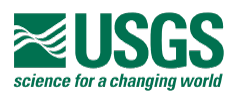Landscape Partnership Resources Library
Monarchs in the Southeast
A guide on the life history, common threats, and conservation measures you can implement to support Monarchs!
ANCHOR: An Opportunity to Change Landscape Connectivity Networks and Conservation Delivery At-Scale in the U.S.
Abstract: Connectivity modeling has been a tool available to the conservation community since the 1980s that guides our responses to habitat fragmentation. While the sophistication of computer modeling continues to grow, on-the-ground delivery remains challenging and lacks urgency. We present an approach to scale up delivery and do so within effective timeframes. The approach, termed ANCHOR (Areawide Networks to Connect Habitat and Optimize Resiliency), is grounded in connectivity science but executed in a manner that is flexible, expandable, and measurable. ANCHOR goes beyond the traditional protected area focus for establishing connected biomes to maximize the contributions of existing public lands and expand private landowner participation. The approach is applied using an umbrella species to represent a faunal group and/or multiple taxa to deliver co-benefits of landscape connectivity. Public lands receive connectivity rankings that are then used to engage potential connectivity partners who commit land units and collectively monitor improvements in habitat quality and landscape resiliency. The ANCHOR approach can guide unprecedented participation across agencies and departments to create public lands networks, while private and corporate lands establish landscape connections. To illustrate the approach, we present an example of native grasslands conservation in the central and eastern U.S. and an emerging partnership with the Department of Defense.
SE FireMap Fact Sheet
This document highlights the overall SE FireMap initiative – offering a technical summary of the project’s background, development process, timeline, and objectives.
SE FireMap Fact Sheet - 1.0 Technical Version Original
This document highlights the overall SE FireMap initiative – offering a technical summary of the project’s background, development process, timeline, and objectives.
Aquatic Connectivity Framework (ACF) Fact Sheet
The Aquatic Connectivity Framework (ACF) is a WLFW partnership effort that brings together public and private partners to tackle critical threats to watersheds across 16 states in the eastern and central U.S.
Bog Turtle Wildlife Habitat Evaluation Guide (WHEG)
WLFW uses WHEGs to evaluation before and after conditions anticipated from a contract.
People For Pollinators Social Media Toolkit
It is time to protect our pollinators! This toolkit will give you the tools you need to create an eye-catching campaign on social media quickly and easily.
Virginia 645: Upland Wildlife Habitat Management
This practice consists of the management of food, cover, and shelter for wildlife which can be utilized for waterfowl nesting habitat.
Virginia 644: Wetland Wildlife Habitat Management
This practice is supplemented with other wetland standards to provide financial assistance in the management of a wetland for wildlife habitat.
Virginia 587: Structure for Water Control
This standard allows for the installation of a water control structure to provide the manipulation of water levels. The ability to control water levels in a shallow water waterfowl impoundment can allow for proper moist soil management techniques.
Virginia 378: Pond
This standard allows for an area to impound water through excavation or an earthen embankment. For waterfowl, a pond standard consisting of shallow excavation and a berm of no more than 3 FT is suggested.
Virginia 356: Dike
This standard allows for the construction of an earthen berm to assist in controlling water levels for waterfowl management.
Virginia 338: Prescribed Burning
This practice is utilized as another method to control unwanted or invasive species, as well as promote early successional plant growth. Early successional moist soil plants are a vital dietary source for waterfowl and other wildlife species.
Virginia 327: Conservation Cover
This standard is utilized for establishing vegetative cover to enhance wildlife habitat.
Virginia 315: Herbaceous Weed Treatment
This standard allows for the removal or control of herbaceous weeds including invasive, noxious, and prohibited plants. This practice is applicable for areas that have excessive Phragmites australis growth allowing for removal and management of these areas to let native plants to reestablish.
Virginia 314: Brush Management
This standard allows for the removal and management of woody plants including invasive and noxious plants. Using this standard will allow landowners with existing degraded wetlands or waterfowl shallow water areas to clean up the area and return it to early successional vegetation.


























